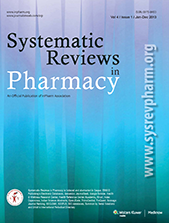Molecular Analysis for Azoospermia Factor Microdeletions in the Y chromosome for Azoospermic and Severe Oligospermic Infertile Iraqi Patients
Abstract
Mohammed. N Al-Qaisi, Mushtak. T Al-Ouqaili, Duraid. T Al-Hadithi
Defined infertility as incapability of a married couple tá´� have children for the one-year á´�f unprotected intercourse. Y chromosomal microdeletions are the second greatest common genetic reason of men sterility. This research aims to find the prevalence of AZF Y chromosome microdeletions in azoospermic and severe oligospermia patients. Further, to evaluate the prevalence types of AZF/c sub-region microdeletions in patients with AZF/c deletion in Iraq. A total of 75 infertile Iraqi males and 25 control were included in this study. The DNA samples were extracted, and they were analysed for AZF microdeletions by utilizing eight sequence-tagged sites through a q/real-time PCR system. After that, partial AZF/c deletion sub-region was investigated using four specific primers. These markers were chosen according to the EAA/ EMGQ recommendations. Out of 75 infertile patients, 46 patients (61.33%) revealed AZF microdeletions in the Y chromosomal with at least one STS deletion for one or more AZF regions. (32.6%) of patients with microdeletions observed in three regions AZFabc. Out of 24 patients who have AZF/c microdeletions (37.5%) were exhibited b2/b4 deletion (complete AZF/c deletions), (58.3%) were showed gr/gr microdeletion (partial AZF/c deletions. and (4.1%) with b2/b4 deletion continues the terminal heterochromatin region. The incidence of classical AZF microdeletions in our study subjects is high. In our study population, gr/gr partial AZF/c microdeletions were higher than b2/b4 complete AZF/c deletion. The mean levels of sex hormones in azoospermic sterile patients with AZF microdeletion were higher than the mean of azoospermic sterile men without deletion of AZF.






